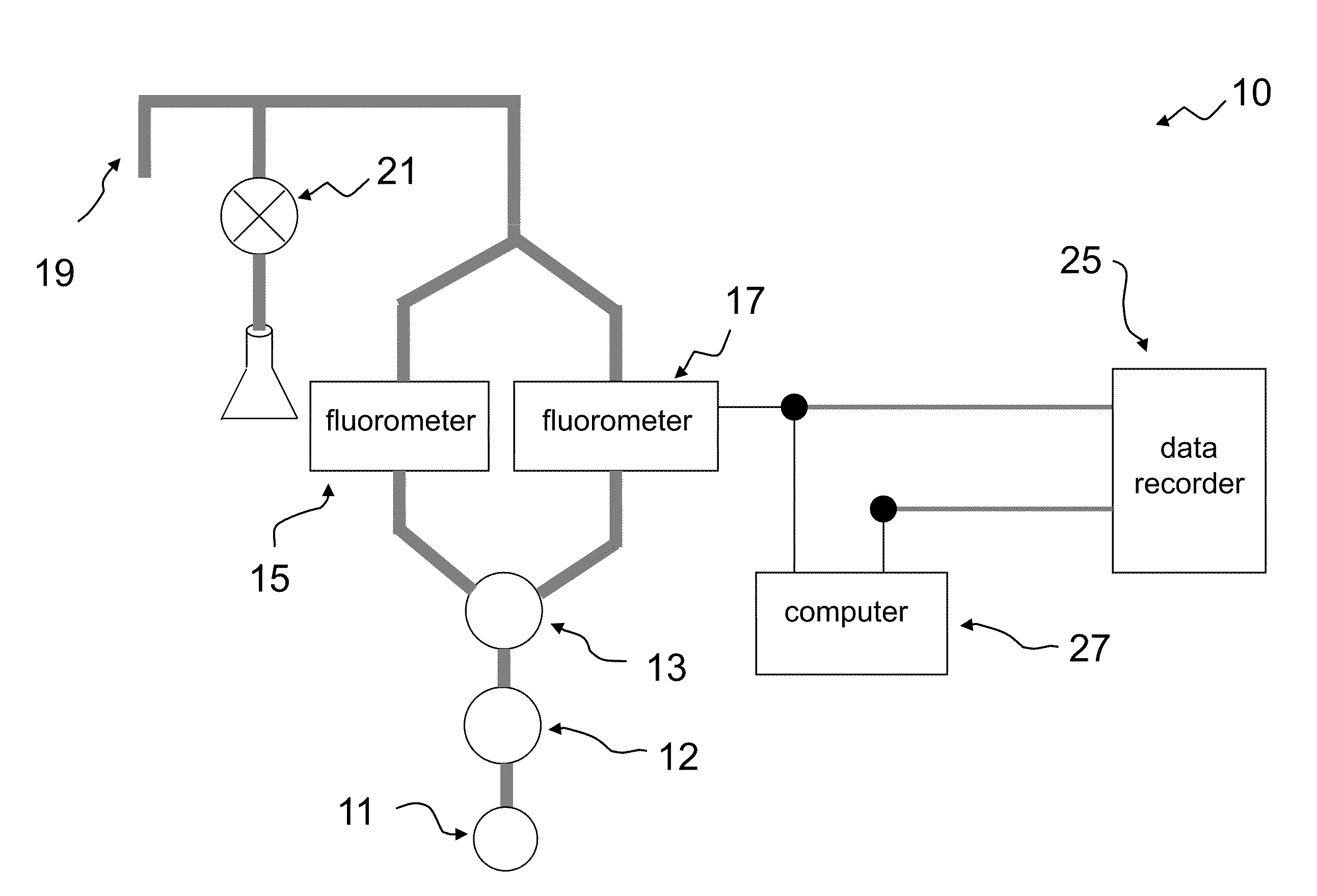Method and apparatus for determining the presence of optical brighteners in water samples
a brightener and optical technology, applied in the field of water analysis, can solve the problems of difficult rapid quantitative measurement of ob levels, and achieve the effect of rapid quantitative measurement and high fluorescence signal
- Summary
- Abstract
- Description
- Claims
- Application Information
AI Technical Summary
Benefits of technology
Problems solved by technology
Method used
Image
Examples
Embodiment Construction
[0027]The disclosed apparatus and method may employ a field-based flow-through fluorometry embodiment or a field-based or laboratory-based embodiment employing discrete collected water samples. Both embodiments may be used for determining OB concentrations or OB and CDOM concentrations in waterways, especially in waters having unknown or varying CDOM concentrations. The discussion that follows will focus on the field-based flow-through fluorometry embodiment, it being understood that the other disclosed embodiments may be made through easily accomplished modifications to the field-based flow-through fluorometry embodiment.
[0028]Referring to FIG. 1, apparatus 10 may be transported in a suitable vessel (e.g., a small boat) through waters in which it is desired to determine the amount of OBs originating from OSTDS effluents or other waste streams. A sample intake 11 equipped with a suitable pre-filter (e.g., a 200 mesh filter) and made of a suitable inert material (e.g., PVC or polyeth...
PUM
| Property | Measurement | Unit |
|---|---|---|
| wavelength | aaaaa | aaaaa |
| emission wavelength | aaaaa | aaaaa |
| emission wavelength | aaaaa | aaaaa |
Abstract
Description
Claims
Application Information
 Login to View More
Login to View More - R&D
- Intellectual Property
- Life Sciences
- Materials
- Tech Scout
- Unparalleled Data Quality
- Higher Quality Content
- 60% Fewer Hallucinations
Browse by: Latest US Patents, China's latest patents, Technical Efficacy Thesaurus, Application Domain, Technology Topic, Popular Technical Reports.
© 2025 PatSnap. All rights reserved.Legal|Privacy policy|Modern Slavery Act Transparency Statement|Sitemap|About US| Contact US: help@patsnap.com



